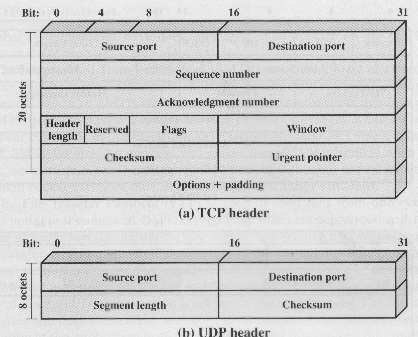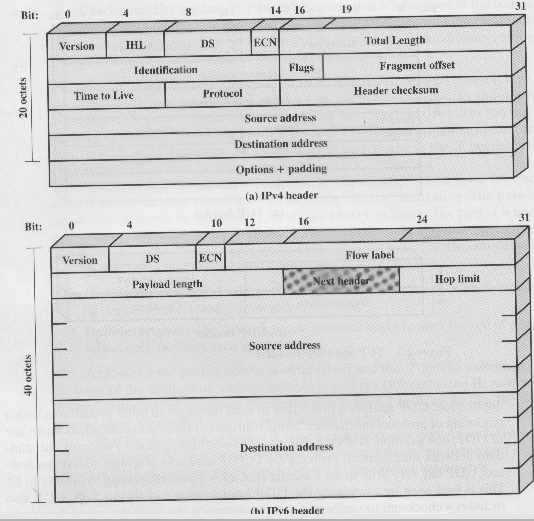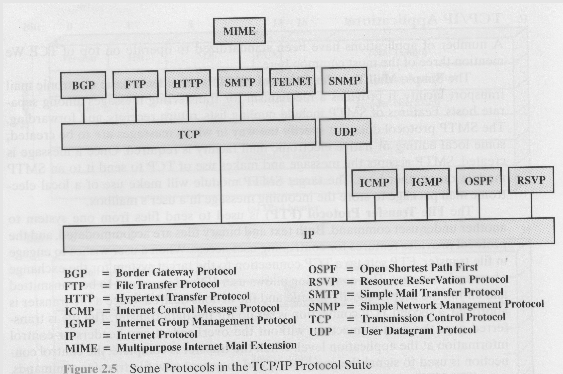- TCP and UDP
- TCP forms a connection between two elements in a communication.
- This consists of a logical mapping between ports and ip addresses on two machines.
- It provides reliable transfer, ie if a packet is dropped, a new one is requested.
- This is accomplished via sequence number of packets
- It also provides flow control
- This is somewhat expensive however.
- UDP or User Datagram Protocol is an alternative
- This is at the same level as TCP
- There is not guarantee of delivery
- Or in-order delivery
- The header is much smaller, and the overhead much lower.
- And much less processing
- In the case of SNMP this is an ideal solution
- Look at the two headers on page 39.
-

- Note, even the checksum is optional.
- IPV6
- The payload, plus the transport layer header, plus the IP header is an IP Packet or an IP Datagram
- In IPv4 this included 32 bit source and destination addresses.
- There was some thought that we would run out of addresses in the near future.
- There are 232 or 4.3 billion addresses possible with this setup.
- But at the time we were assigning big chunks of addresses to single sites.
- For example Edinboro has 147.64._._ or 216 65,536 addresses assigned to us.
- in fact, in MCS we have 147.64.242.___ and 147.64.243.___ or 512 addresses assigned to us.
- The IETF (Internet Engineering Task Force) decided in 1995 that we would soon run out with IPv4 addresses
so they created IPv6.
- This has a address size of 128 bits.
- or 3.4x1038 addresses.
- This is not completely unreasonable.
- Some day your watch may have an ip address.
- And your mp3 player
- and your refrigerator
- ...
- The process of moving to IPv6 is expected to take decades.
-

- Some Applications
- SMTP - Simple Mail Transfer Protocol
- This is a file transfer protocol (RFC 821).
- That also involves source and destination users
- Which has become far more complex in recent years.
- There is an ability to act as a relay, in case the source and destination are
- FTP as we have discussed (RFC 959)
- TELNET as we have discussed (RFC 854).
- All of these use TCP/IP
- Even SSH (RFC 4251).
- MIME - Multipurpose Internet Mail Extension (RFC 2045)
- Look at the picture on page 42
-



